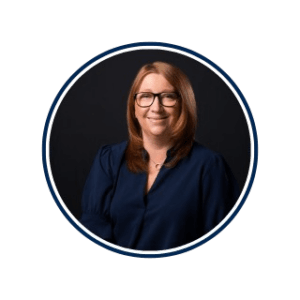Switching suppliers, or even just sticking with the right one, is rarely straightforward. For firms dealing with thousands of moving parts and supply pressures that don’t seem to let up, the idea of shifting to—or staying with—a multi-brand group can feel like a serious commitment. But that’s kind of the point. Bigger structures don’t just look better on paper; they often mean fewer shocks to your business.
So, what actually changes when you choose a holding group over a standalone supplier? And what do those differences really mean in a climate where chemical supply chain resilience and manufacturing procurement support tend to make or break performance?
This article unpacks it, without the fluff, showing how group-backed suppliers often provide more predictability, better support, and fewer disruptions long-term.
What is a Holding Group, and How Does It Work?
In simple terms, a holding group is a parent company that owns and oversees multiple independent brands, each with its own area of expertise, but all operating under one roof. These brands might serve different markets or specialise in separate products, yet they share central management, financial oversight, and long-term direction.
The Rakem Group is a clear example. It brings together our specialist companies such as Rakem, Maker, and Cemkem, each focused on distinct aspects of chemical supply, from advanced R&D to construction additives. Yet they’re connected through shared leadership and operational systems, making the group more cohesive and stable.
That means if one brand hits a supply issue or market slowdown, the others can help balance things out. Clients don’t just get one supplier—they gain access to a full bench of expertise, underpinned by central support.
Key features of a holding group structure:
- Shared financial and operational oversight
- Access to wider expertise across sub-brands
- Coordinated strategy and risk management
- Streamlined procurement and billing
- More predictable long-term planning
The Stability & Financial Strength of Multi-Brand Groups

For many businesses, the biggest threat isn’t a one-off crisis—it’s unpredictability. A holding group reduces that unpredictability by pooling resources and spreading risk across multiple companies. This structure often translates to financial strength that standalone suppliers might struggle to match.
Think of it this way: if a single-brand supplier runs into trouble—maybe a raw material shortage or an unexpected bill—it’s on its own. But within a group, there’s usually backup. Cash flow can be redistributed, resources reallocated, and continuity maintained. That extra layer of financial support tends to bring clients real peace of mind.
You’re not just buying a product; you’re plugging into a more resilient system.
How it compares:
| Standalone Supplier | Holding Group Supplier |
| Limited financial backup | Shared financial resources |
| Narrow service scope | Multi-brand capabilities |
| Higher risk of disruption | Layered continuity planning |
| Slower scalability | Scalable with internal support |
In short, working with multi-brand chemical suppliers gives you access to more than just products—it gives you a cushion when markets wobble. That’s holding group stability in action.
Streamlined Access to Expertise & Resources
Trying to coordinate between multiple specialist suppliers often slows things down. You chase updates, juggle contacts, and spend too much time making the pieces fit. A holding group simplifies that, so instead of managing different suppliers across industries, you work with one partner who already brings them together.
Within Rakem Group, that integration really shows. Say you’re developing a new product and need technical support from R&D, compliance advice, and a reliable supply of chemical additives. Rather than manage three separate vendors, you tap into one group that offers the lot through a single point of contact.
It’s not just easier—it’s faster, too. You avoid repeating yourself, dodge internal bottlenecks, and get answers quicker.
Here’s how that support might flow:
- You outline a project or production need
- A central account lead identifies the relevant in-house experts
- Technical teams from Maker or Rakem provide advice or testing
- Procurement and delivery are managed centrally
- Ongoing support continues through one channel
And because their research and development teams are already integrated, support tends to be more joined-up and less reactive.
Risk Mitigation: Why Suppliers Prefer Holding Groups

Sticking with a single-brand supplier can feel risky, especially when market pressures, shipping delays, or regulation changes show up unannounced. That’s where a holding group brings a bit more breathing room.
Because decision-making is centralised and resources are shared, these groups are usually quicker to react. Whether it’s shifting production across sub-brands, navigating new compliance rules, or stepping in when a delivery route shuts down, they’re already built to flex without much fuss.
What that means for you is fewer unexpected stops, fewer compliance worries, and more consistent product quality—all without constantly switching vendors.
Here are a few risks that tend to drop off the radar:
- Unexpected stockouts from small or stretched suppliers
- Regulatory missteps due to siloed compliance knowledge
- Gaps in service during staff turnover or factory downtime
- Fragmented support when managing multiple niche vendors
- Delays in problem-solving across disconnected teams
In some respects, risk management in industrial partnerships isn’t just about insurance—it’s about picking a supplier setup that stays calm when things go sideways.
Case Study: How a UV Product Manufacturer Found Stability Through The Rakem Group
In the high-stakes world of UV inks and coatings, supply chain instability can cause more than just a few headaches—it can derail production entirely. That was the challenge facing a leading British manufacturer of bespoke UV products. With over 35 years of innovation behind them, their reputation hinged on consistent quality and timely delivery. But securing a steady supply of titanium dioxide (TiO₂)—a key ingredient—was growing increasingly difficult.
That’s where Rakem, part of The Rakem Group, stepped in.
By partnering with Rakem in 2020, the manufacturer transitioned to a far more stable procurement model. With TiO₂ notorious for its volatile availability, they needed a supplier that could not only deliver reliably but also shield them from price spikes and delays.
Rakem did just that.
Working within the group’s integrated structure, they provided tailored, responsive service that helped the client regain control over their supply chain. The result? A consistent material supply, greater pricing stability, and a dependable partnership built on trust.
In the client’s own words:
“Rakem and its team have done a superb job of keeping supply steady and managing to keep pricing stable. Having this confidence with a supplier is a massive help to us, and I am sure the relationship will go from strength to strength.”
It’s a real-world example of how multi-brand groups like Rakem Group deliver more than just materials—they offer assurance, flexibility, and long-term support that standalone suppliers often struggle to match.
Explore more success stories like this in our case studies, or contact us to start a conversation about consolidating your supply partnerships.
